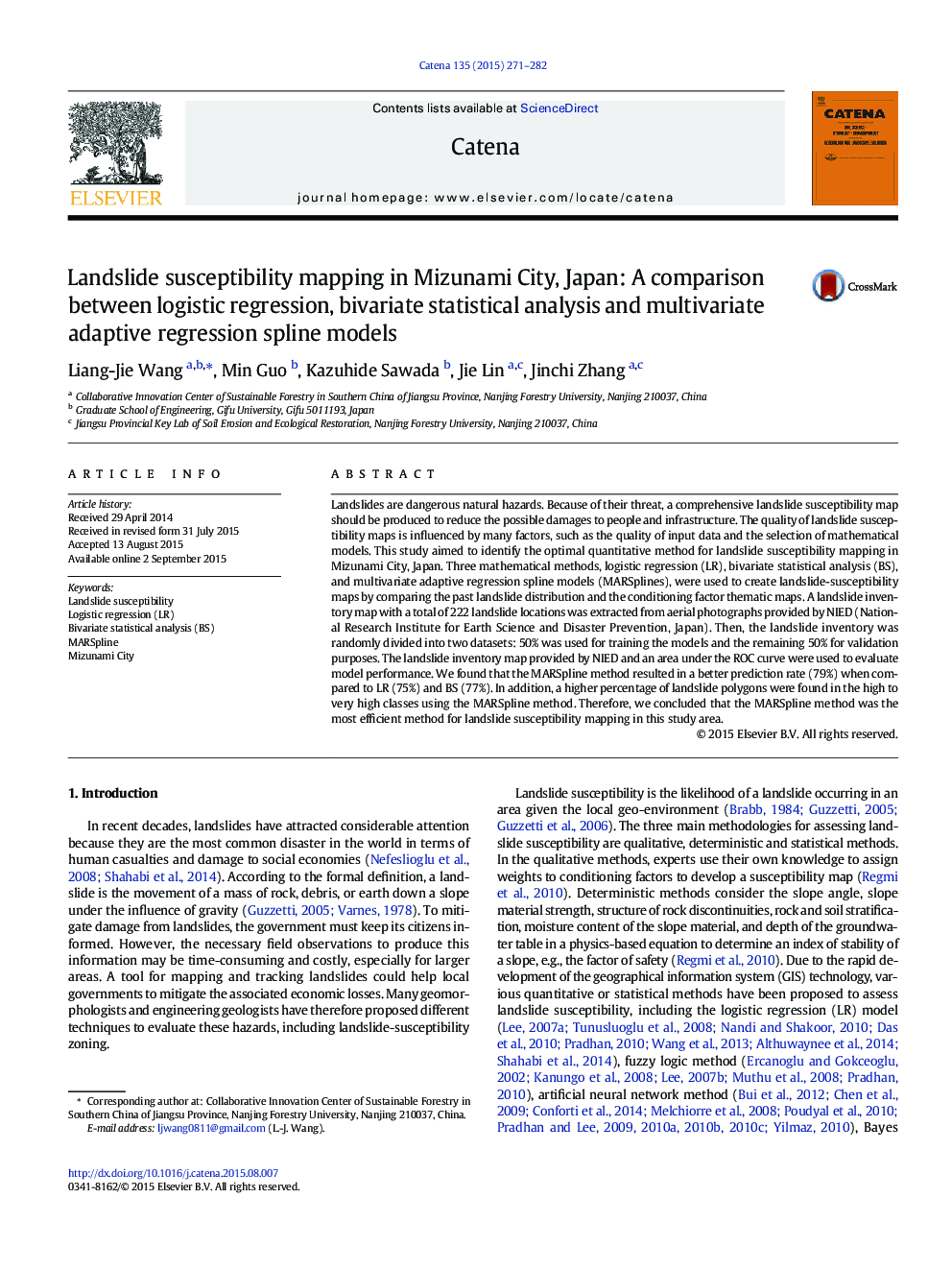| کد مقاله | کد نشریه | سال انتشار | مقاله انگلیسی | نسخه تمام متن |
|---|---|---|---|---|
| 4571099 | 1629217 | 2015 | 12 صفحه PDF | دانلود رایگان |
• This study provides three methods for landslide susceptibility mapping.
• BS, LR, and MARSpline methods were used in this study.
• MARSpline shows the most approximate results.
Landslides are dangerous natural hazards. Because of their threat, a comprehensive landslide susceptibility map should be produced to reduce the possible damages to people and infrastructure. The quality of landslide susceptibility maps is influenced by many factors, such as the quality of input data and the selection of mathematical models. This study aimed to identify the optimal quantitative method for landslide susceptibility mapping in Mizunami City, Japan. Three mathematical methods, logistic regression (LR), bivariate statistical analysis (BS), and multivariate adaptive regression spline models (MARSplines), were used to create landslide-susceptibility maps by comparing the past landslide distribution and the conditioning factor thematic maps. A landslide inventory map with a total of 222 landslide locations was extracted from aerial photographs provided by NIED (National Research Institute for Earth Science and Disaster Prevention, Japan). Then, the landslide inventory was randomly divided into two datasets: 50% was used for training the models and the remaining 50% for validation purposes. The landslide inventory map provided by NIED and an area under the ROC curve were used to evaluate model performance. We found that the MARSpline method resulted in a better prediction rate (79%) when compared to LR (75%) and BS (77%). In addition, a higher percentage of landslide polygons were found in the high to very high classes using the MARSpline method. Therefore, we concluded that the MARSpline method was the most efficient method for landslide susceptibility mapping in this study area.
Journal: CATENA - Volume 135, December 2015, Pages 271–282
